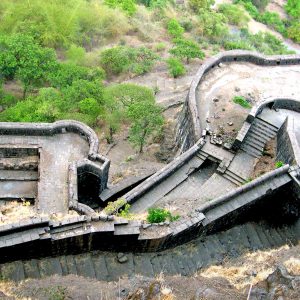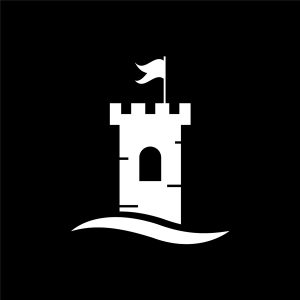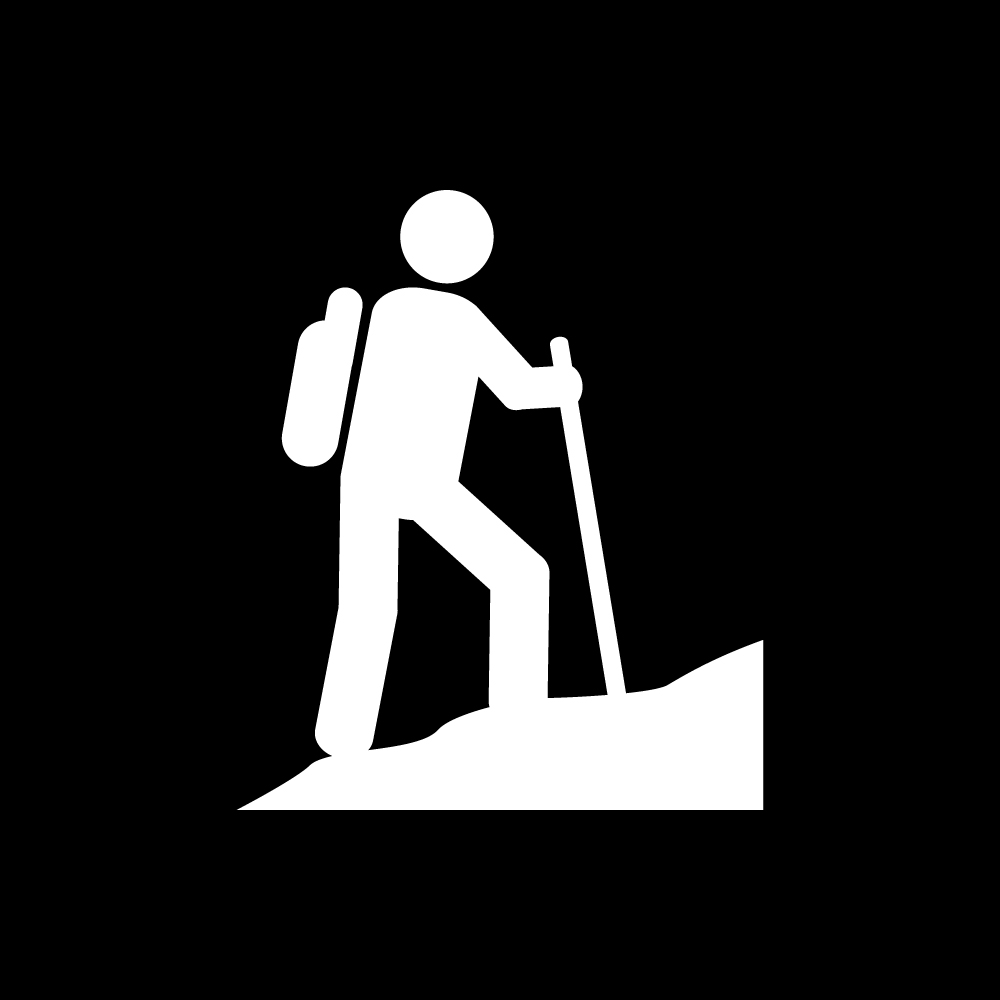Forts
Maharashtra is like a mine of forts. The diversity of forts found in Maharashtra is not found anywhere else. These forts are our inspiration and heritage of history. Describing the forts, Kavindra Parmanand in his book 'Shivbharat' says, “Prabhuna Durgma Durg Prabhu Durgen Durgam. Aadurgamtva Dubheyorvidhvishnev Durgam.” “Akramnay Durgam, gamnay durgam iti durg” Kavindra Parmanand has described the word 'Durg' in this way in his book. The first mention of forts is in the Rigveda. Rigveda refers to the present cities with ramparts around them as 'Pur'. The forts are mentioned in the ancient texts of Mahabharat and Ramayan, especially in the 'Shantiparva' of the Mahabharat. In Kautilya's Arthashastra, there are two chapters on the subject of forts. It mentions ground forts, forest forts, water forts, hill forts, and many other things related to the construction of forts like ramparts, bastions, and moats.
...
The Satvahans at Paithan in Maharashtra are the earliest known dynasties. To protect Naneghat in the high mountains of Sahyadri, forts like Jeevdhan, Chavand, Hudsar, Shivneri were built by the emperors of the Satvahan dynasty. After this, Abhir, Wakatak, Chalukya, Rashtrakut, Yadav, and other such dynasties who were established in Maharashtra, started to build forts. Later, when the Islamic dynasty was established in Maharashtra, some small local dynasties emerged during the Bahamani period. These dynasties built small forts for administrative work with protection from invasions. All these dynasties used the forts only for protection, collection of taxes, and monitoring wharves. But this system changed during the time of Shivaji Maharaj. According to Kautilya's statement 'Eshaa hi bahugunyen giridurgo vishisyate', Shivaji Maharaj used the inaccessible, barren, and neglected hills for the protection and expansion of Swarajya by setting up bases and building forts on them. Although the difficulty is the true identity of the fort, other factors were taken into consideration while constructing the forts. A fort was built keeping in view the geographical structure around the fort, the protective sides, and the necessities for accommodation on the fort. The most important of these is water. About this the documents say.......“Gadavar aadhi udak pahun killa bandhawa. Pani nahi aani te stahal bandhane prapta zhale tari khadak phodun tali, taki parjanyakalparyant sampurna gadas pani purel aashi majbut bandhavi. Gadavar zhara he aahe, zase tasze pani purte, mahnun titkiyavarich nishchinti na manvavi. Ki zhunzha madhye bhandiyache aavajakhali zhare swalp hotat ani paniyacha kharcha vishesh lagto, tevha sankat padhte yakarita jakhiriyache pani mahnun don-char taki tali bandhavi. Tyatil pani kharcha na hou dyave. Gadache pani bahut jatan rakhave.” The main policy of the fort is to make sure that the water supply is adequate and is maintained. Here are some of the important points of the fort. When we talk about the protection of a fort it starts from the nearby village. The first layer of protection of a fort is its environs. The forts environs consist of the villages and provinces. After this comes the surveillance. Apart from the major and easy routes to the fort, a guard of the fort needs to be extra careful while keeping an eye on the difficult and unused paths to the fort. To keep an eye out in the night is one of the major tasks of the guards. After this comes the outpost on the way to the fort. While climbing a fort, 1 or 2 houses that you see en-route are called outposts. The people assigned to this outpost had a job to keep an eye on the people visiting the fort. These outposts had specific names. These outposts were very important for the safety and security of the fort. After this comes to the actual construction of the fort. The first to be seen is the ramparts with a height of almost half of the fort. The ramparts of the fort are the armor of the fort. The construction of the ramparts of the fort depends on its geographical structure. The ramparts are not visible in areas where there is a cliff, but sometimes if one side of the fort is weak and could easily be accessed by the enemies, double ramparts are built in that area. In ancient times, wooden planks or earthen ramparts were built but in later times people started using wrought stones and bricks. Then comes the bastions of the fort. The bastion is one of the main places of protection and patrol. The cannons on the fort were mainly kept on the bastion. These bastions had different names. Armored bastions with double walls can be seen in some forts. Such bastions were built in places that were fragile from the point of view of invasions. If the fort is of the ground fort type, a moat would be dug around the ramparts. A large trench was dug around the fort to prevent the enemy from entering the fort. Water with crocodiles and snakes were released in it. This kind of security was present around a ground fort. A movable bridge was built to cross the moat. After the bastions of the fort, we reach the main gate of the fort. The main gate of the fort is known as Mahadarwaja. As its structure is very important for the protection of the fort, it was hidden between two bastions so that it could not be easily seen from outside. The gates were guarded and barricaded. At this door, you can see sculptures of animals like elephants, Sharabhs, lions, Gandabheruds as well as various types of sculptures of deities and flowers. These sculptures are sometimes carved on the ramparts and also on the temples. The larger forts had one or two more gates other than the main gate. The wicket gate is a small door in the main gate to enter and exit the fort without opening the huge main door. The room on the inside of the main gate is the porch. For the convenience of the guards, the design of the porches consisted of seating arrangements. Some town halls were built on top of the main gate. Townhall is a place where occasional drums, horns, trumpets, and other instruments are played. After entering through the main door, we enter the Machi of the fort. Most of the hill forts are divided into two parts, Machi and the citadel. Machi is an area with a plain surface under the fort. Located below the main fort, it was very important in terms of protection. Except for important people, most of the settlements of the common people on the fort were on Machi. Due to this, most of the constructions of mansions, administrative offices, barns, lakes, and other buildings can be seen on this Machi. Looking at the ramparts of the fort, one can see the steps built on the inside of this high rampart as well as on the sides in some places to reach the gate and the bastions. By climbing these steps, we reach the curtain wall on the ramparts. A curtain wall is a place for walking around the inside of a rampart. It was used by the patrolling guards. The holes in the wall of the fort and the bastion were for guns, bows, and cannons. It has a downward slope and is designed to easily spot kill an enemy outside the ramparts. Also, in some places, large vents are built to hold the mouths of the cannons. These cannons on the fort are an important element in the defense of the fort and are of Otiv or Ghadiv type. The cannon of Otiv type is made by melting metal and pouring it into a mold, while Ghadiv is made by carving separate pieces and then joining them together by round loops. These cannons were mainly made of iron or alloy and their ability to strike depends on their size. On some of the forts, you can see triangular-pentagonal carved stones in the shape of petals on the ramparts as well as on the doors. These stones of the fort are known as Charya. This enhances the beauty of the fort and also allows you to attack the enemy by taking its cover. As you walk around the ramparts, you often see a small door in the ramparts. This route, known as “Chordindi” or “Chordarwaja” and was used to escape in times of crisis. According to Shivaji Maharaj’s order, except for the main gate of the fort, there should be a secret door too. According to this, you can see such gates in an unfamiliar side of the fort in remote places. Apart from this, while walking on the ramparts, you can see some toilets built in it. On the highest point of the ramparts, one can see the place of the flagpole. The most important need of the settlements on the fort is water. The construction of the fort used to start as soon as people discover the existence of water on the fort. The stones obtained during carving out cisterns were used in constructing ramparts and other structures on the fort. Since water is an important requirement on the fort, lakes, and wells were constructed. In many forts, dams have been built on the slopes and water has been blocked. After touring the ramparts, you can see many buildings and various structures on Machi. One of the most important of these is the Amberkhana. Amberkhana is the granary of the fort. On the larger fort there was a separate building for this while on the smaller fort these grains were stored in some cave or elsewhere. Apart from this, another important thing in the fort is the ammunition depot. Ammunition is very important for cannons as well as guns to keep the fort fighting against enemies. This ammunition depot was far away from the major structures on the fort. The interior of the depot was completely plastered with high-quality lime to prevent the gun powder from freezing or reacting with the environment. The ammunition depot was guarded day and night and no one was allowed to roam around it without permission. Weapons such as shields, swords, guns, armor, spears, belts, and axes were kept in the arsenal. After this, another important structure on the fort is the administrative office. This is the main office of the fort where meetings, complaints, judgments, and important decisions are taken. Some of the administrative offices were of the fort, while some of them were of a particular area. On some of the small forts, the administrative office and the fort keeper’s mansion were common. The next building on the fort is the mansion or palace. Most of these mansions were inhabited by fort keepers, but if a member of the royal family came to the fort, they would be accommodated in this mansion. Each fort has a temple of one or the other deity, but the majority of forts have the temples of their fort’s deity. These temples, which were once lit up by lights, are mostly seen today as relics. Also, there were horse stables around the main entrance. Apart from this, another building on the fort is the dungeon or prison for keeping prisoners. This building was as far away from the mansions and administrative offices to prevent threats. Walking around the fort, you can see the quadrangle structures of small houses in many places. This was the accommodation of the fort officials and soldiers. In the past, lime was used for construction and plastering. The limestone used for making this lime and its stone wheel can still be seen on many forts. The citadel is the second part of the fort, which is enclosed and built on a hill or a hummock on the Machi. In simple language, the citadel is a second fort inside the fort. It had important structures on the fort as well as accommodation for the royal family. While exploring forts, you can see many remains like Samadhi, hero stone, Satishila, inscriptions in the villages at the base of the fort. Hero stone was erected in memory of the warriors who died in the battle, while Samadhi was erected in memory of the people of the royal family. If someone’s wife had gone Sati, Satishila would be carved in her memory. Apart from this, the inscription of the fort gives us information about the construction of the fort as well as information about various dynasties. These inscriptions were carved in stone and were written in Brahmi, Persian, and Devanagari languages. While visiting a hill fort, you can see a large number of caves. Some of these caves are natural and most of them have been man-made since ancient times. These caves were used for many things on the fort. Needle hole is another beautiful nature’s creation seen on the hill fort. A needle hole is a huge hole in a hill. Apart from this, there were many other structures on a fort-like Khalbatkhana, Vestry, Treasury, Daftarkhana, coin mint, Hattishala, Talim, etc. Due to these structures on the fort, some forts were a perfect independent city. Many of these structures can be easily identified while exploring the fort. So, come on let's explore these forts!!
© Suresh Nimbalkar





